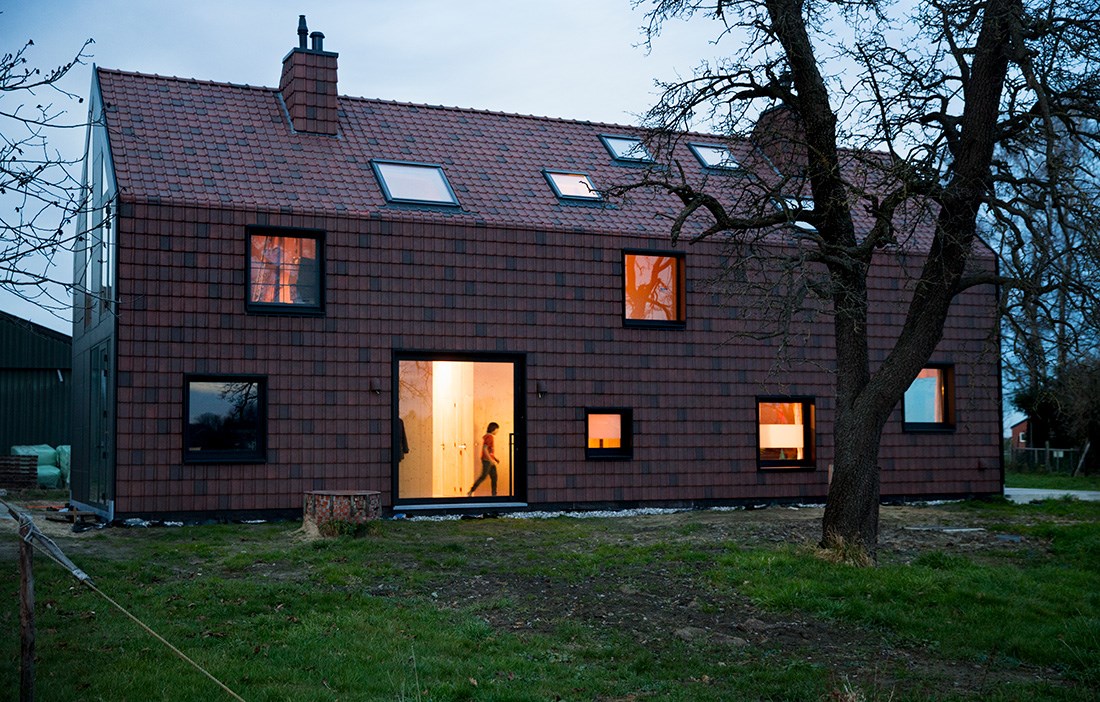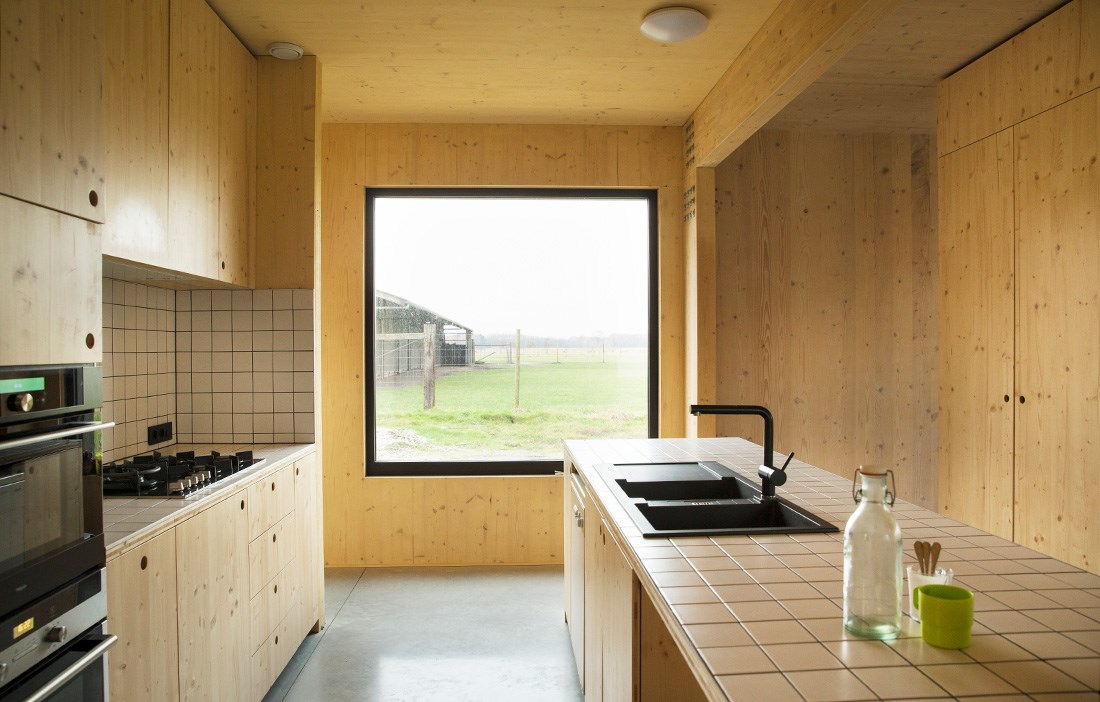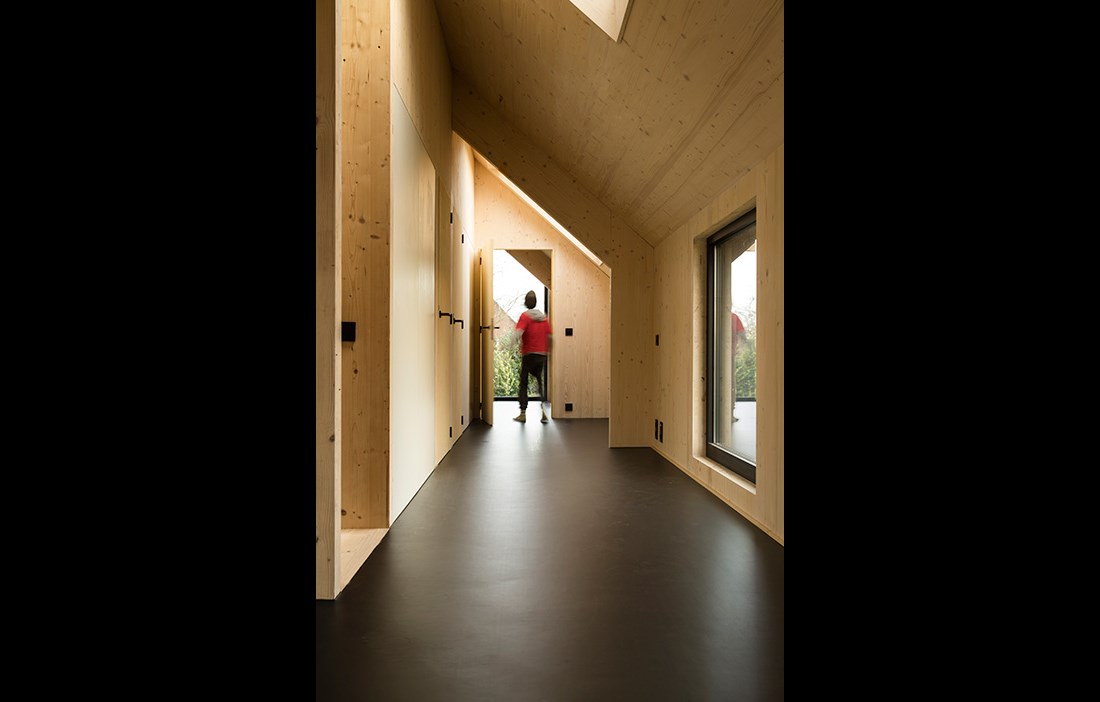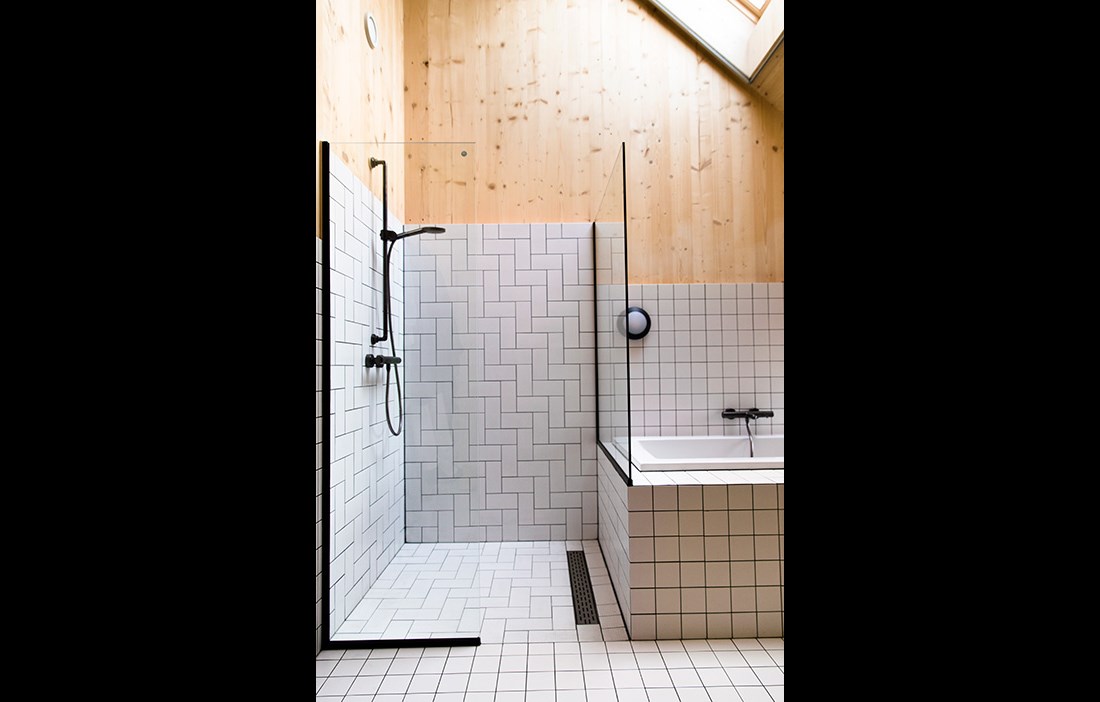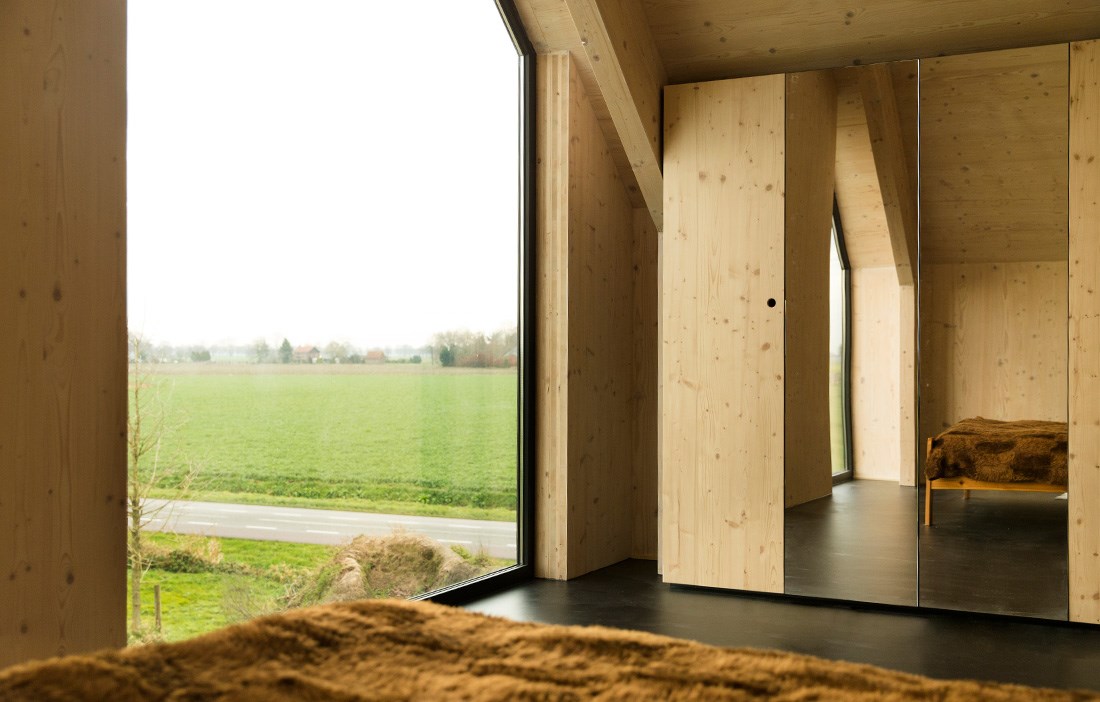The house is called Dear Farm, a pun on Deer Farm, and it sits in a typically rural area of Baarle-Nassau in the Netherlands. The plot was previously occupied by a long-sided barn – a style of architectural building that was quite common locally. Initially the clients wanted to convert the barn, but on reflection they decided to knock it down and build a modern, new take on the old vernacular.
But things needed to move quickly.
“The deer need peace and quiet from the mating season, which starts in October, until the fawns are born in the spring, so we only had six months to build the house. We knew that using wood shortens the timeframe of the construction process, since you can work on the inside and the outside of the building at the same time,” says Sylvie Bruyninckx, architect at Viva Architecture, who designed the house.
Another reason for choosing CLT was the family’s limited budget.
“Wood is a light material that delivers an energy-efficient building without the need for heavy wall structures and expensive foundations. Wood also automatically provides good acoustics, air quality and fire safety. Plus it’s attractive and sustainable. We like the feel of it, and it fits in well with the family’s visions and ambitions for the farm,” continues Sylvie.
The house is split into sections that are linked along the length of the building. Part of the vision for the design was that the family would always have a view of the deer farm.
“Windows in every room offer views of the barn and fields, so the family can always see the deer: when they wake up, go to bed, soak in the bath, cook or watch TV. Since all the views from the house are stunning, we added square windows in two sizes so they can see the landscape in every direction, but from different angles depending on whether they are lying down, sitting or standing,” explains Sylvie.
The clay roof tiles are typical for farm buildings in the area, but the house delivers a twist on this by having the tiles running down the façade as well.
“It was also cheaper, because bricks and other façade materials are more expensive than roof tiles. What’s more, we didn’t need guttering or drainpipes, as the water just runs off the tiles.”
The gable ends of the house combine glass with aluminium cladding. Inside, the wood has been left bare, punctuated with black & white details.
“Leaving the wood naked really shows off the ‘skeleton’ of the building. It contributed to the sense of simplicity that defines farming life. We also chose to have built-in furniture made from plywood – kitchen units, benches, cupboards and desks that can then be ‘dressed’ with the family’s belongings,” says Sylvie.
Opting to leave the wood natural indoors also helped to keep the budget down.
The family is pleased with the house and Viva Architecture is enthusiastic about having worked with such fearless clients, who had the courage to embrace the wooden interior throughout. Although some of the more conservative neighbours have branded the house “the ugly duckling” among all the traditional buildings, there has been a generally positive response from the local community and many outsiders. The architects, who hadn’t worked much with CLT before, are inspired to do so again in the near future.
“We learned a lot about this way of building and within a few years we hope to be specialists in CLT, as we believe it also has major advantages for larger apartment blocks. We’re currently trying to convince some of our clients about its merits,” says Sylvie Bruyninckx.
Text Martina Nyhlin

